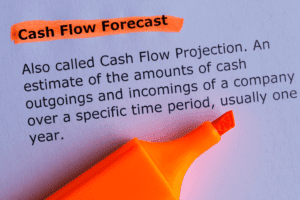
While these assets are not physical in nature, they are often the resources that can make or break a company—the value of a brand name, for instance, should not be underestimated. Current assets have a lifespan of one year or less, meaning they can be converted easily into cash. Such asset classes include cash and cash equivalents, how to construct a balance sheet accounts receivable, and inventory. Angela has used and tested various accounting software packages; she is Xero-certified and a QuickBooks ProAdvisor. Experienced in using Excel spreadsheets for her bookkeeping needs and created a collection of user-friendly templates designed specifically for small businesses.
Service businesses show growth through increasing revenue, for example. Equity is the amount of money you and your investors have put into the business. You’ll know you’ve created an accurate balance sheet when the sum of equity and liabilities is the same as, or balances with, your assets.
How to Read and Analyze a Profit and Loss (P and L) Statement
The second reason is to compare the company against others in the same industry. It will give you an idea of how efficient the company is and whether they are making a profit. Doing so allows you to see how your financial circumstances have changed and identify areas for opportunity and improvement. Get global corporate cards, ACH and wires, and bill pay in one account that scales with you from launch to IPO.
If equity is positive, it means the company has enough assets to pay for its liabilities, and if it is negative, the liabilities exceed the assets. While there’s no overlap in balance sheet and income statement accounts, net income appears on the balance sheet as part of retained earnings, an equity account. These are the financial obligations a company owes to outside parties. Determine your business’ retained earnings and working capital, as well as the total shareholders’ equity.
Balance Sheets Secure Capital
Passionate about minimalist storytelling, she prioritizes breaking down complex industry jargon into engaging stories accessible to all readers. As with assets, these should be both subtotaled and then totaled together. From payment processing to foreign exchange, Chase Business Banking has solutions and services that work for you.

Line items in this section include common stocks, preferred stocks, share capital, treasury stocks, and retained earnings. Shareholder’s equity is the net worth of the company and reflects the amount of money left over if all liabilities are paid, and all assets are sold. Noncurrent assets are long-term investments that the company does not expect to convert into cash within a year or have a lifespan of more than one year. For instance, if a company takes out a ten-year, $8,000 loan from a bank, the assets of the company will increase by $8,000. Its liabilities will also increase by $8,000, balancing the two sides of the accounting equation.
The three aspects of a balance sheet in detail.
As explained in my prior write-up, due to chronic underbuilding, the US housing market has significant supply shortages, which creates a favorable net demand environment for builders. These three core statements are intricately linked to each other and this guide will explain how they all fit together. By following the steps below, you’ll be able to connect the three statements on your own. Revenue, including non-operating income, is $842,000 ($834,000 net sales + $5,000 interest income + $3,000 other income).
- Find a variety of financing options including SBA loans, commercial financing and a business line of credit to invest in the future of your business.
- Investors and creditors use the balance sheet to assess the health of your company’s finances.
- A lender will usually require a balance sheet of the company in order to secure a business plan.
- Such asset classes include cash and cash equivalents, accounts receivable, and inventory.
- As with assets, liabilities can be classified as either current liabilities or non-current liabilities.
- For example, it allows you to assess what portion of the assets you own are liquid and whether you have enough cash on hand to meet current demands.
Each of the three financial statements has an interplay of information. Financial models use the trends in the relationship of information within these statements, as well as the trend between periods in historical data to forecast future performance. The balance sheet is a powerful analytical tool for investors and creditors, but it doesn’t provide a full understanding of your company’s value. It is important to note that a balance sheet is just a snapshot of the company’s financial position at a single point in time.

